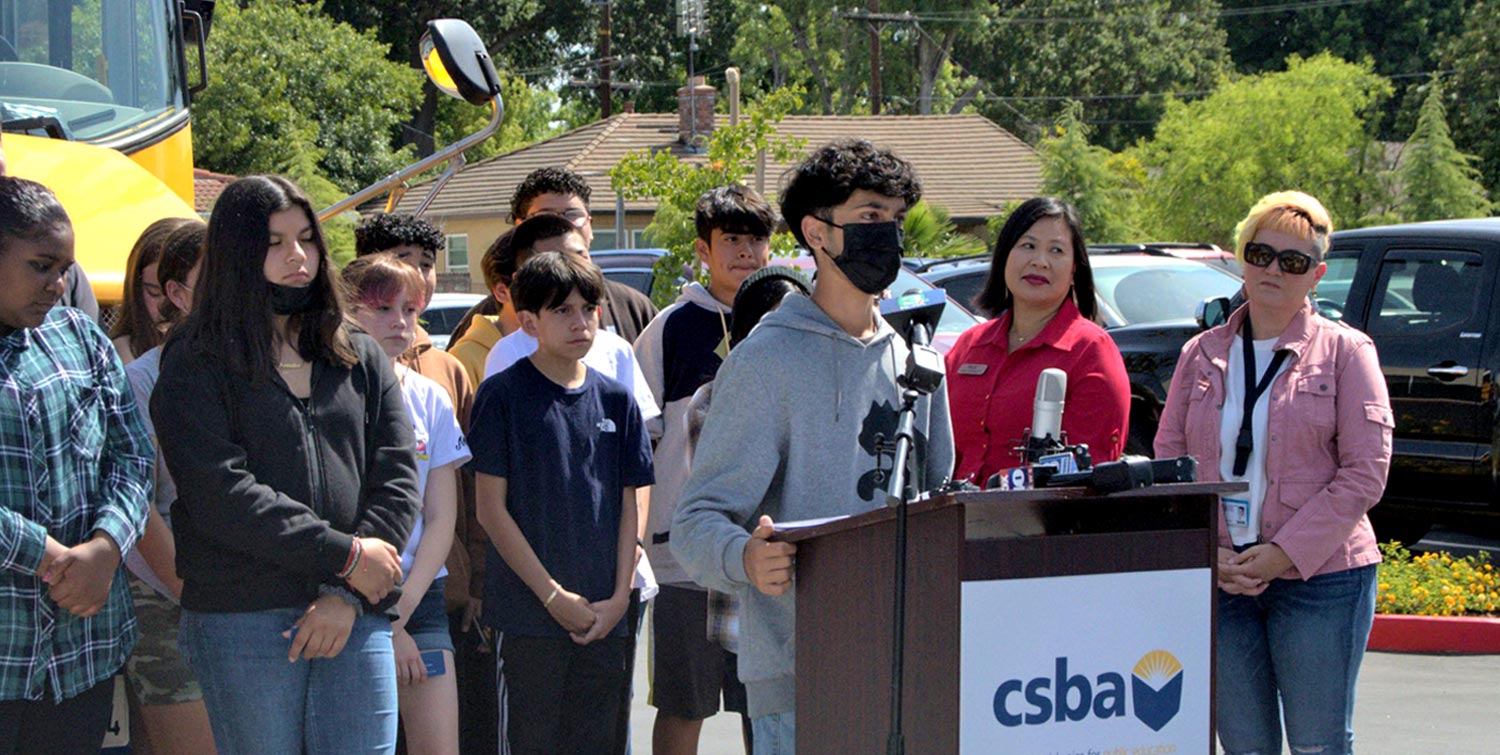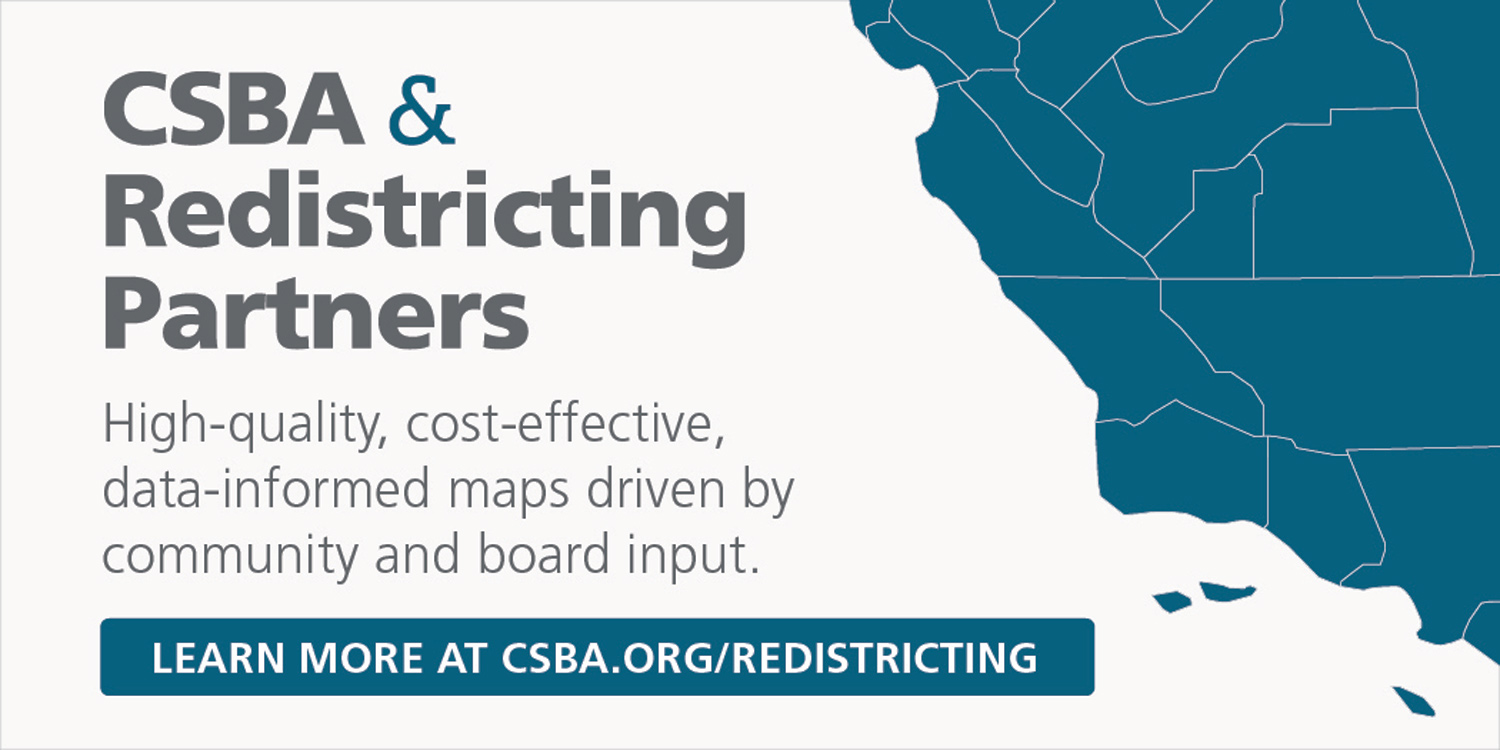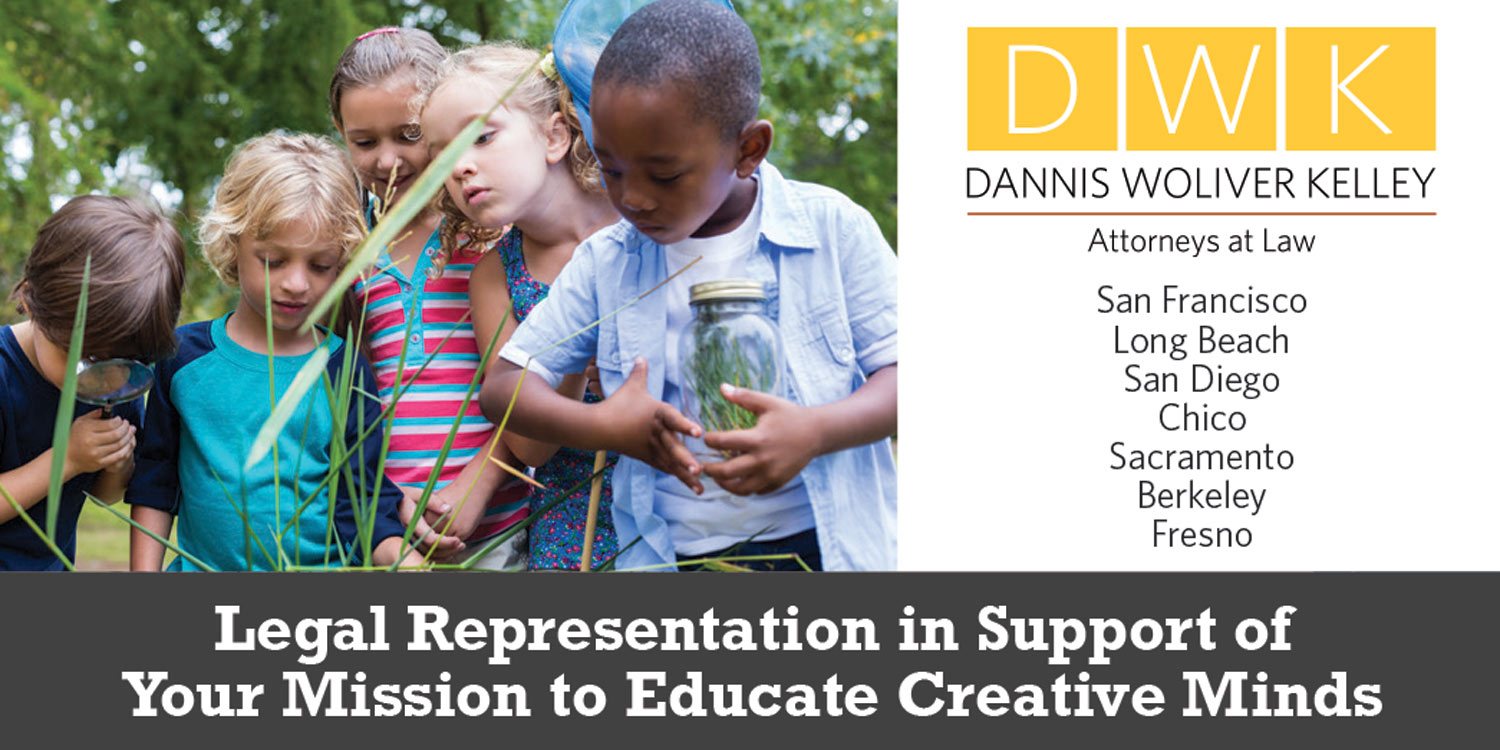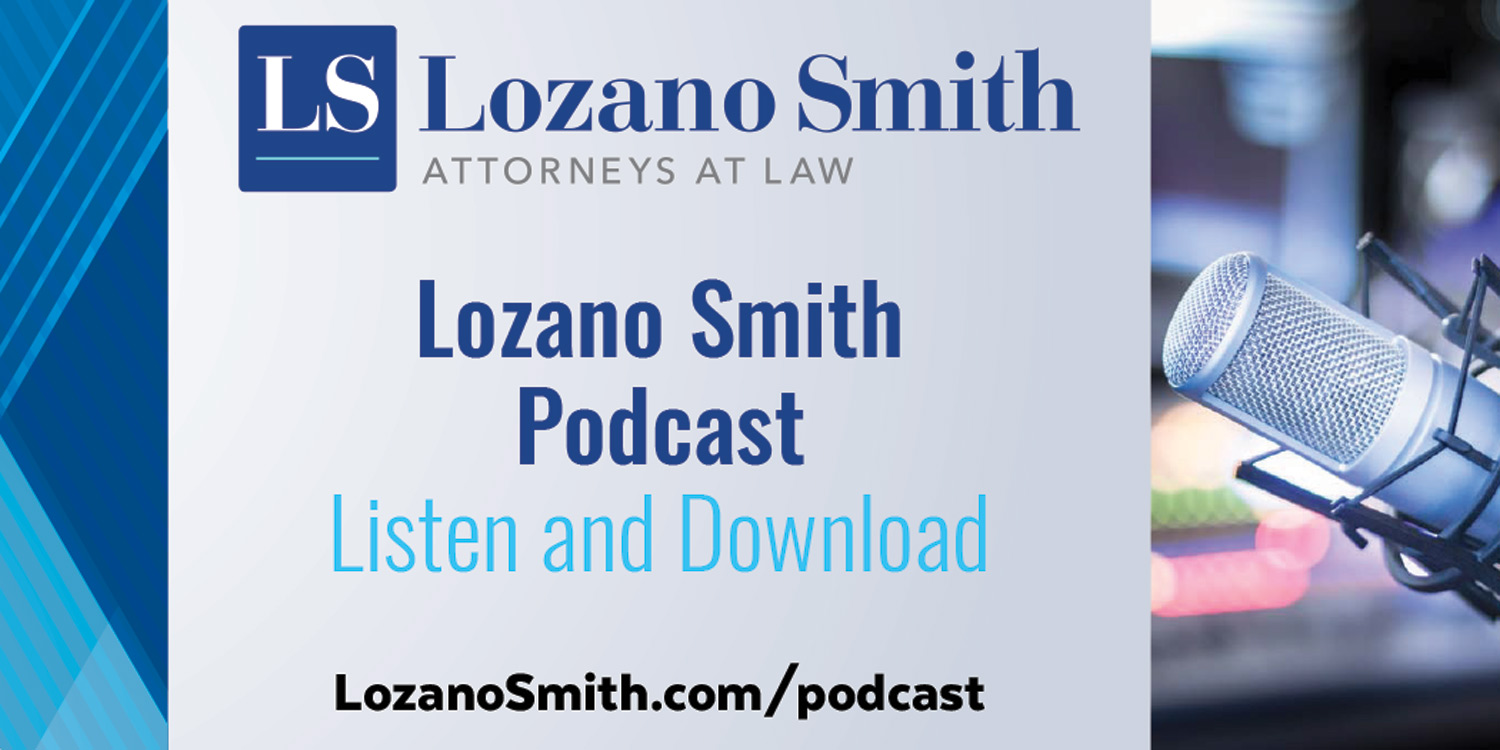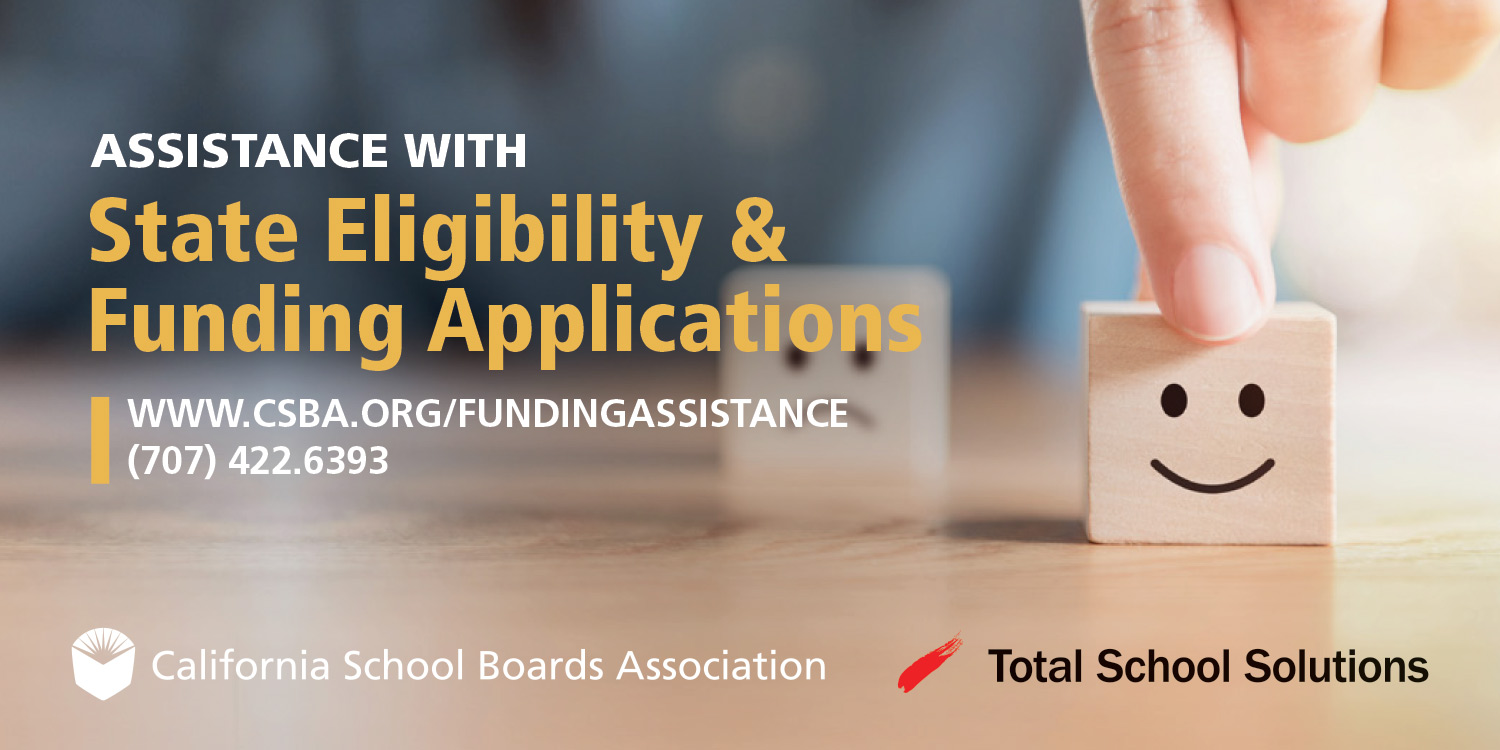

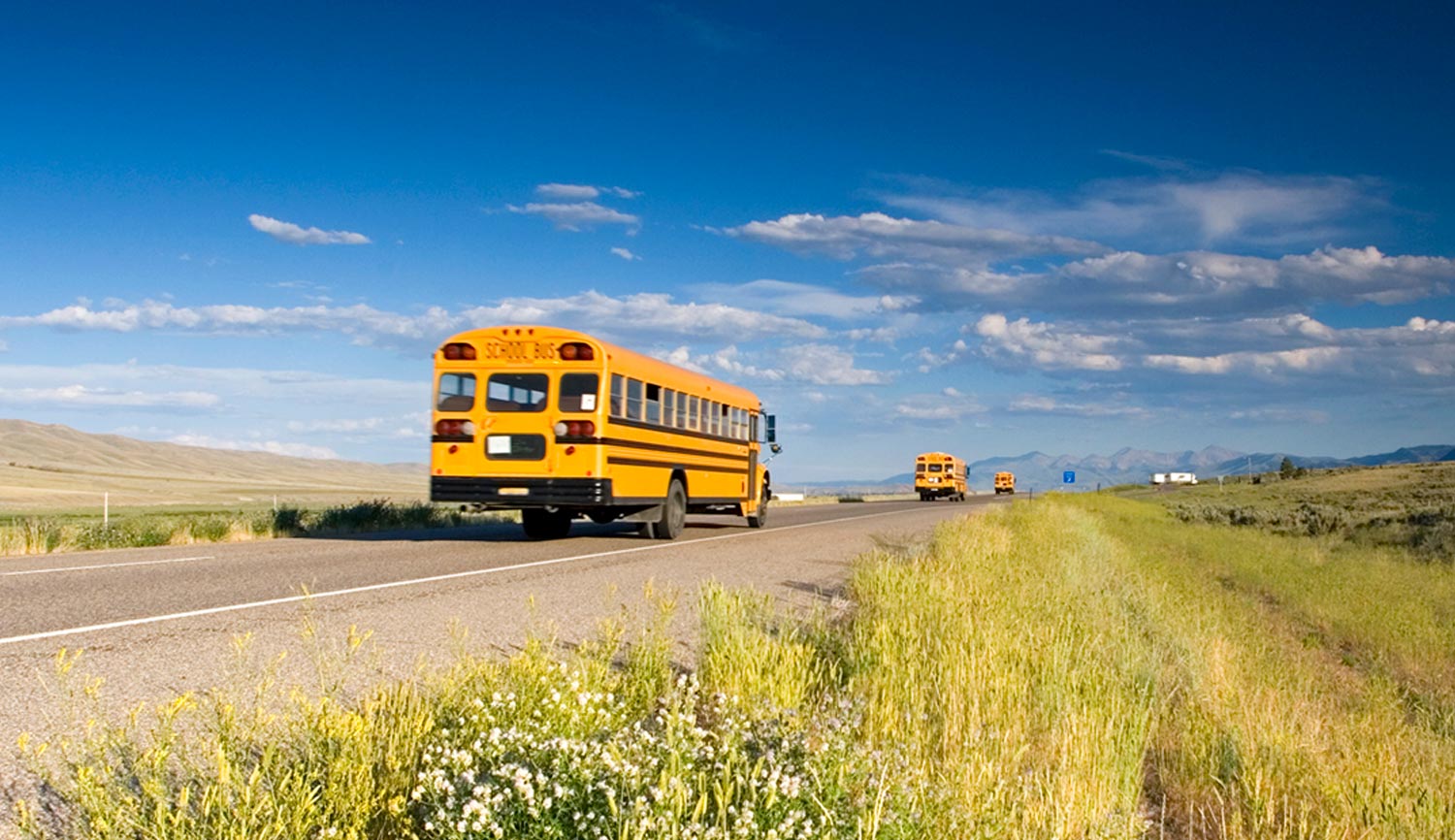
The first, Assembly Bill 2337, will define Frontier School Districts in the California Education Code in alignment with federal grant requirements as school districts that have annual average daily attendance of less than 600 students and are located in a county with a population of less than 10 persons per square mile. This will ensure these small, rural school districts receive recognition for the distinct challenges they face. These include low student enrollment, inadequate financial resources, mixed grade levels in classrooms, difficulty recruiting qualified teachers and unrealistic one-size-fits-all approaches to education policy and funding that often overlook the needs of the state’s rural communities.

Troy Flint | tflint@csba.org
Editorial Director:
Kimberly Sellery | ksellery@csba.org
Marketing Director:
Andy Rolleri | arolleri@csba.org
Staff Writers and Contributors:
Alisha Kirby | akirby@csba.org
Heather Kemp | hkemp@csba.org
Teresa Machado | tmachado@csba.org
Kristin Lindgren | klindgren@csba.org
Barbara Laifman | blaifman@csba.org
Graphic Design & Branding Director:
Kerry Macklin | kmacklin@csba.org
Senior Graphic Designer:
Amanda Moen | amoen@csba.org
Dr. Susan Heredia | Natomas USD
President-elect:
Susan Markarian | Pacific Union ESD
Vice President:
Albert Gonzalez | Santa Clara USD
Immediate Past President:
Xilonin Cruz-Gonzalez | Azusa USD
CEO & Executive Director:
Vernon M. Billy
California School News (ISSN 1091-1715) is published 11 times per year by the California School Boards Association, Inc., 3251 Beacon Blvd., West Sacramento, CA 95691. 916-371-4691. $4 of CSBA annual membership dues is for the subscription to California School News. The subscription rate for each CSBA nonmember is $35. Periodicals postage paid at West Sacramento, CA and at additional mailing office. POSTMASTER: Send address changes to California School News, 3251 Beacon Blvd., West Sacramento, CA 95691.
News and feature items submitted for publication are edited for style and space as necessary.

From Sacramento to Washington, D.C., CSBA’s legislative efforts take flight
CSBA’s bread-and-butter will always be our advocacy here in Sacramento and the May Budget Revision underscores how critical that work is. For the past two years, CSBA has argued that the impact of the pandemic will be generational in scope and that the state must recognize the magnitude of the challenges school face and provide opportunities to transform public education in a way that serves all students. That premise was reflected in our budget advocacy, which prioritized a significant increase to Local Control Funding Formula base funding, COVID attendance relief, pension relief, full funding of home-to-school transportation costs and dedicated funding to pay for the buildout of transitional kindergarten facilities.

Local educational agency representatives from around the state gathered in Sacramento May 21–22 for the spring Delegate Assembly meeting. Delegates were updated on various CSBA initiatives including reports from the Board Development, Bylaws and Candidate Review committees. The CSBA legal team updated Delegates on current cases affecting education and the culminating report from CSBA’s Climate Change Task Force was presented.
The centerpiece of the meeting was breakout sessions in which Delegates discussed responses to four questions, each asking what is needed at the local, state and federal level to support the four pillars that form the basis of CSBA’s Policy Platform. CSBA gathered input from Delegates to inform the development of the 2023–24 Governance First Agenda, which is the association’s list of legislative priorities. The current agenda covers the ongoing 2021–22 legislative session, which extends through September of this year.


With the guiding structure of LCAP goals in place, districts are well-positioned to identify further goal-setting protocols, empowering boards to perform their key responsibility of setting the direction for the district while at the same time giving superintendents clear direction as to how they articulate and prioritize their own goals.
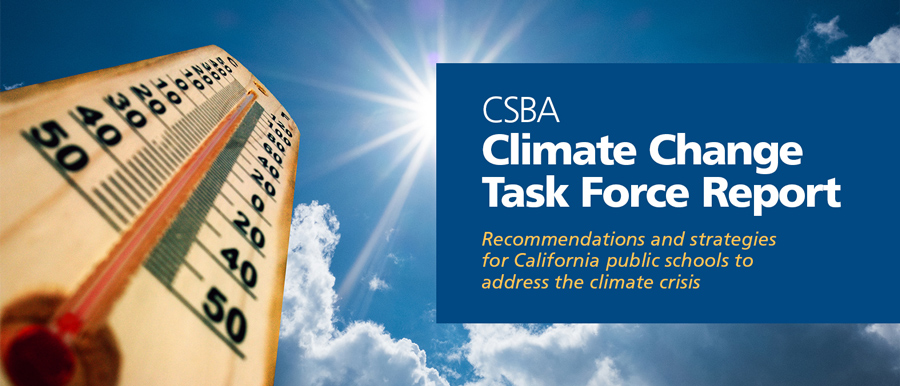
Beyond that, the physical damages to facilities suffered by school districts and county offices of education have also resulted in economic hardships and social-emotional repercussions in the communities they serve.
These are among the reasons why CSBA’s Climate Change Task Force recommends local educational agencies and K-12 leaders be involved in conversations with policymakers on climate change and adaptation.

LRP founder Celinda Lake provided a rundown of findings on the first day of Coast2Coast — the three-day inaugural advocacy trip to Washington, D.C. hosted by CSBA and the Association of California School Administrators from April 25–27. The event enables school and county board members and superintendents to advocate directly with congressional representatives, White House officials, key federal agency leaders and other top policymakers to shine a light on the issues affecting the state’s nearly 6 million students.

The COVID-19 pandemic has required local educational agencies to constantly adjust as the course of the pandemic has shifted. The transition LEAs made to distance learning in March 2020 was a difficult endeavor, but one that board members, administration and staff embraced.
However, as soon as K-12 public education hit its stride in distance learning, the Legislature enacted Assembly Bill 130, which asked LEAs to once again adjust by creating only two methods for delivery of public K-12 education: (1) through in-person instruction; or (2) through traditional independent study. This created a number of challenges for LEAs. This article discusses the litigation that arose from this “all or nothing” approach and its impact on students with disabilities as well as the current iteration of proposed trailer bill language, which has not been introduced to the Legislature as of this writing, amending AB 130 and the independent study statutes.

Using two years of data from the California Healthy Kids Survey (CHKS), the study for the first time disaggregates data on gender identity and sexual orientation in order to provide a more nuanced picture of LGBTQ students’ experiences in school. Results were presented for three gender identity categories (transgender, cisgender, and not sure) and for five sexual orientation categories (straight, gay/lesbian, bisexual, not sure yet, and something else). The CHKS offers valuable data to school administrators and state officials on how LGBTQ students perceive their school climate and how those perceptions relate to their academic success and emotional well-being.

The board moved ahead with the $3 billion California Community Schools Partnership Program (CCSPP) funds, approved last year by the Legislature to establish new and expand existing community schools, by approving $635 million in planning and implementation grants for about 265 school districts, county offices of education and charter schools.
Nearly 200 local educational agencies with no existing community schools will receive $200,000 two-year planning grants in the first round. Priority was given to applicants with schools in which 80 percent or more of the total student population are included in the unduplicated student count and to LEAs serving rural and small schools.
Government Code 16.5 authorizes public entities, including districts and COEs, to use a “digital signature” in any written communication with a public entity in which a signature is required or used. A “digital signature” is an electronic identifier created by computer and intended by the party using it to have the same force and effect as the use of a manual signature. An “electronic signature” consists of an electronic sound, symbol or process attached to or logically associated with an electronic record and executed or adopted by a person with the intent to sign the electronic record.

Teacher burnout, turnover and retention have been at the forefront of the minds of local educational agency leaders for years, but now with increased urgency as the pandemic continues to push many educators to the brink.
The six-district Walnut Valley Consortium — comprising Rowland Unified School District, Hacienda La Puente USD, East Whittier SD, South Whittier SD, Whittier City SD and Walnut Valley USD — has long worked to address these issues at the root: preparation through high-quality induction, free of cost to new teachers.
Through induction programs, new teachers are assigned a mentor for their first two years to offer the support needed to be successful. As soon as someone is hired with a preliminary credential within the six districts, Julie Sheldon, the consortium’s induction coordinator, matches them with a mentor they can go to, ideally on the same campus, in their subject area for materials, guidance, lesson plans, support and who can advocate on their behalf. The districts have long provided this to new teachers free of charge, while providing a stipend for mentor teachers. The program boasts a 98 percent retention rate, Sheldon said. “I would say to school boards, find out as much as you can about induction and look at the cost of not having it. It’s an investment in the future.”
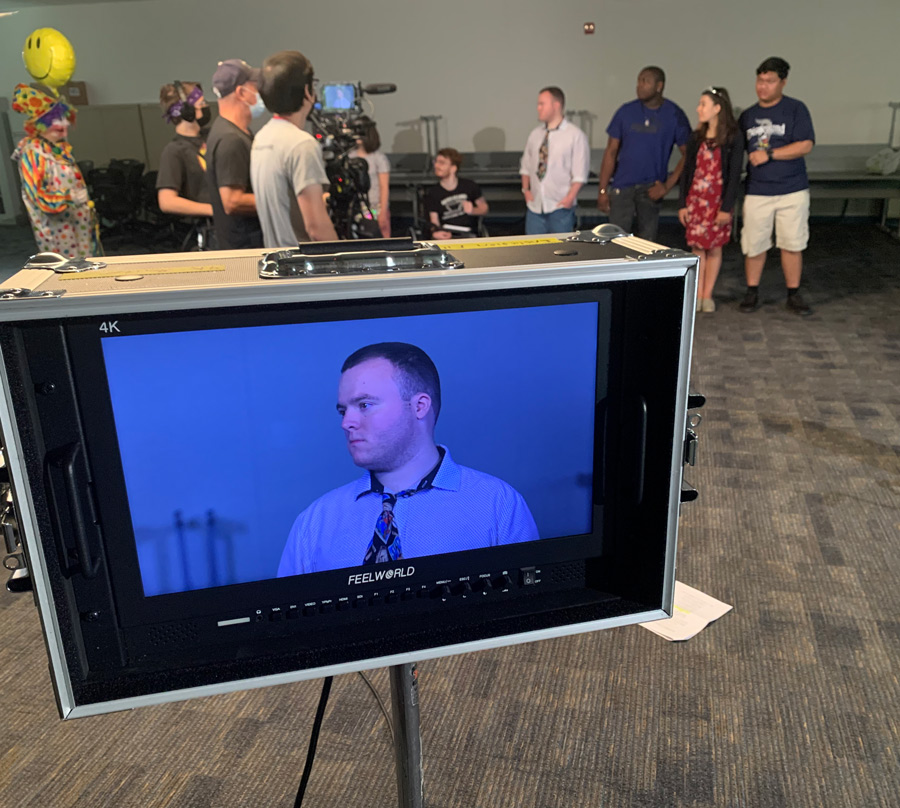
Travolta comes from a show business family and has worked as an actor, director, producer and singer; however, more importantly, he got his start as a special education teacher. He is a strong advocate for people with different abilities and founded Inclusion Films in 2007 to create movies that include individuals with disabilities as part of the creative process.
MIG Course 4: Human Resources/Collective Bargaining
MIG Course 5: Community Relations & Advocacy/Governance Integration
The Brown Act
MIG Course 5: Community Relations & Advocacy/Governance Integration
Governance with an Equity Lens
2022 Leadership Institute | Los Angeles
2022 CCBE Annual Conference | Monterey


